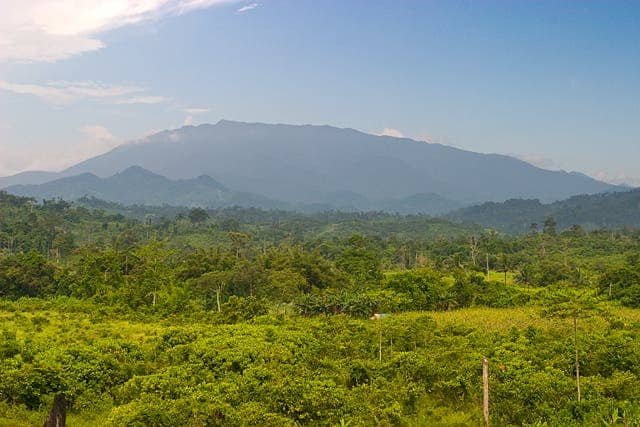The new shrew can teach us a lot about biodiversity, habitats, and even flood prevention.

The Philippines is teeming with life — with over 200 species of mammals, 400 species of reptiles, and almost 700 species of birds, it’s definitely one of the planet’s biodiversity hotspots. Now, we can add one more creature to that very long list: a shrew found around 5,000 feet (1,500 meters) above sea level.
Palawanosorex muscorum, commonly known as the Palawan moss shrew, was first spotted 2007 by the late Danilo “Danny” Balete, field survey leader and research associate at the Field Museum. Unlike other shrews, this critter’s tail is covered in dense fur rather than visible scales. Sporting a slender, pointed snout, a dark coat, and long claws, the Palawan moss shrew spends most of its time digging through moss and humus for its favorite snack: juicy earthworms.
Rainer Hutterer, the paper’s lead author, carried out a detailed analysis of all these traits and behavior, ultimately concluding that it was indeed a different species. Larry Heaney, Curator of Mammals at the Field Museum in Chicago, who also worked on the paper, said that the discovery of the species wasn’t surprising in the least — after all, its habitat is a biodiversity hotbed.
“In many ways, finding this species was exactly what we had expected,” Heaney explains.
But perhaps even more important than the animal itself, the finding could show biologists how the Philippines‘ many mammal species got there in the first place, and how they became so unique.

For instance, Heaney says, the Palawan moss shrew’s home is a hotbed within a hotbed. Mt. Mantalingahan, where the shrew can be found, is home to three unique mammal species, including the shrew.
“There are entire countries that don’t have three unique mammal species — so for there to be three species on one mountain, on one island, in one country is really something,” Heaney emphasizes.
So how can this extreme biodiversity be explained? The key lies in something called “sky islands”. Far from being a sci-fi concept, a sky island is an isolated mountain habitat surrounded by radically different lowland environments. The isolation has significant implications for these natural habitats, creating hubs of biodiversity, which allow multiple species to thrive and coexist within a single geographic area.
However, because these rich habitats are so isolated, it also makes it more difficult for biologists to study them.
“There could be many new species on these high mountainous regions in the Philippines, but because they are so high, and hard to get to, knowledge of their existence is awfully limited,” Heaney says.
But the shrew’s home, Mt. Mantalingahan, also serves as a crucial watershed, regulating the flow of water in Palawan through natural processes. In the higher parts of the mountains, there’s a great amount of rainfall. The humus through which the shrew likes to dig through, searching for worms, acts as a sponge, preventing all the water from going off the mountain. Deforestation, which almost always has negative effects on biodiversity, can be even more devastating on these sky islands — not only on the creatures inhabiting the ecosystem but also on the lowland people, which depend on the rainfall water.
“That’s where most of the water comes from that people in the lowlands depend on,” Heaney warns. “In deforested areas, when a typhoon hits, it kills thousands of people and animals, and destroys buildings. And if water isn’t being released slowly from the mountains, you’ll have less of it in the dry season, causing drought. If you want to protect your watersheds, you’ve got to protect your habitats.”
Many developers have been asking to tear down some of Mount Mantalingahan’s forests for industrial development. But as Palawan, which hosts over half a million people, greatly relies on the flow of highland water, it’s in the best interest of everybody to keep the forests as intact as possible. So in this particular case, the smart economic bet is to not develop at all.
“Sometimes it’s presented that environmental concerns and economic development are at odds with each other. That’s false,” Heaney asserts. “Smart economic development means not creating situations that cause mass damage as a result.”
Beyond the economic advantages, researchers hope that the discovery of new species, such as this shrew, can spark excitement among the Filipino and international scientific communities, which in turn can help encourage research, conservation, and advocacy efforts — something which is much-needed in areas such as the Philippines.
“People in the world get excited about the cool things that live in their country,” Heaney says. “The fact that the Philippines is such a unique hotspot for mammalian diversity is something people should be aware of, something that people can take pride in.”


